The content of the article
Bringing a small kitten to the house, you must be sure that you have enough time, effort and desire to take care of your new pet. This concern is not only about feeding the animal and changing the filler in the tray. The cat needs to be taken to the vet, given her timely vaccinations, combed out her hair and, of course, brushed her teeth. After all, insufficient oral hygiene can cause many diseases of the animal.
Why does a cat brush teeth
This question is asked by some pet owners. And really, why? Indeed, in nature, a cat does not brush its teeth, and even more so, does not use a brush and paste for this. The fact is, life in the wild involves constant, daily hunting with the use and sharpening of sharp teeth. In nature, cats eat raw meat, tearing it from the bones, and bite the bones themselves. Such a natural process cleans the fangs of the animal from tartar, plaque, food debris between the teeth. Specialized food at least mimics wild food - it also needs to be nibbled. However, if your pet’s food is completely homemade, with soft boiled foods, keep in mind that brushing your teeth for domestic cats is essential.
Of course, you don’t have to brush your cat’s teeth twice a day, just like yourself. However, at least two cleanings per week in the animal should be. Brushing an animal’s teeth is the main way to prevent oral diseases. Regular dental cleansing will help you avoid diseases such as stomatitis, caries, gingivitis, tartar, periodontal disease. But proceed with cleaning should be consistent.
How to prepare a cat for toothbrushing
Of course, to teach a kitten to brushing your teeth is much easier than an adult animal. Therefore, try to devote time to the baby's oral hygiene from the very beginning of his appearance in your home. However, if you have an adult animal, you can also train it. For this, it is enough to fulfill several conditions.
- To get started, buy a suitable toothpaste and brush from your veterinary pharmacy. No need to use human hygiene products. The bristles on the brush are quite stiff, they can damage the delicate cat's gum. A huge amount of fluoride in the paste can spoil the tooth enamel of the animal.
- When everything you need is purchased, let the pet get acquainted with new items. This will allow him not to get scared the next time you start brushing your teeth.
- Choose a calm time of the day for the procedure, when the cat is full, does not want to sleep and nothing hurts her. At this time, her curiosity is at its maximum, which will play to our advantage.
- A few days before brushing, let your pet try toothpaste. This will help not to be afraid of new sensations.
- If you have several animals, remember that two cats cannot brush their teeth with one brush, this is a matter of personal hygiene. The fact is that in the saliva of a cat contains a lot of microbes that can infect another animal.
When the cat is acquainted with the upcoming procedure, you need to proceed directly to the cleaning itself.
How to brush your cat’s teeth
Here is a simple algorithm that will help you quickly and safely clean the oral cavity of an animal from everything unnecessary.
- Place the cat directly between your legs, tail towards you (the owner is in a sitting position). She must not see a person. This is the most convenient and optimal position for brushing your teeth. After all, with a feeling of discomfort, the cat will begin to back away, this will allow you not to lose control of the animal.
- If your cat has a bad temper, you may need to swaddle an animal or ask someone from your home for help. One person holds a cat, the other carries out cleaning.
- Place your hand on the back of the animal’s head so that your thumb and forefinger are in the corners of the animal’s mouth. This is the most convenient and safe way to brush your cat’s teeth. However, if you can control the cat’s mouth in a different position, it is precisely this “grip” that is not crucial.
- After that, lift the upper lip of the cat on one side - you will see most of the animal’s teeth. Put a little paste on a cotton swab and go over the animal’s teeth. Do not use a toothbrush immediately - this can scare the kitty. After that, brush your teeth on the other side.
- Each time, open the jaws of the animal more and more to get to the back teeth. Cleaning the back fangs is much more difficult, but the animal needs it the most. In addition, clean the fangs not only from the outside, but also from the inside.
- Over time, when the pet gets a little used, a toothbrush can be used instead of a cotton swab. It cleans the surface of teeth much better and more efficiently.
- If you did not find a special brush, you can use an ordinary children's brush with soft bristles, only they will have to be shortened a little.
- Never brush your teeth with a bandage wound around your finger. A cat in a fit of protection can easily bite you and bite through the bandage will not be difficult for her. Cat saliva is full of germs and pathogenic bacteria, so you should not do this.
- If you have not found specialized paste for animals, you can brush your teeth with tomato paste with baking soda. Just soak the brush in a small amount of tomato paste, and then dip in soda powder. This combination of products reacts and perfectly cleanses the surface of the teeth. Instead, you can brush your teeth with a simple hydrogen peroxide.
- After the procedure, be sure to praise your favorite, calm with a kind word, treat yourself to a treat. The animal will approach the next procedure more calmly, because it knows that after torment it is always waiting for a treat.
If your cat has lived all his life without brushing his teeth, and the veterinarian has pointed out to you a huge amount of tartar in the animal’s mouth, you can’t do the usual brushing. In this case, you will have to take the pet to ultrasonic brushing. The optimal choice of vibrating amplitude will destroy all dental deposits. The procedure is absolutely painless. Anesthesia is used in extreme cases when the cat has a sharp temper and it is impossible to keep it.
What to do if the cat does not want to brush his teeth
Some representatives of the animal (however, human) world have a particularly unbridled character. It is impossible to keep such a cat, it kicks, scratches, bites and completely does not allow to brush its teeth. In order not to injure the nerve cells for yourself and the animal, you can use alternative means for caring for the oral cavity of the animal. However, I want to note that they do not carry in themselves such effectiveness as the simplest, 30 second brushing.
There are special liquid toothpastes for animals on sale. The principle of their use is as follows. A small piece of pasta dissolves in water and is offered to the cat. Thanks to a pleasant appetizing aroma, the cat quickly eats up the entire contents of the bowl. And the paste, in turn, getting into the oral cavity, destroys small deposits on the teeth and kills bacteria on the gums. This is due to chlorhexidine, an antiseptic substance found in this paste.
In veterinary pharmacies, you can also find special bones that need to be nibbled. They contain substances that destroy tartar, and a solid structure instead of a brush passes along the surface of the teeth, cleansing it of plaque.Cats enjoy eating healthy bones with pleasure, because they smell seductively like fish, chicken or meat.
In addition, you should review the principles of animal nutrition. If a cat eats home-made human food, give the animal dry food more often. You can treat the cat even chicken bones - they are certainly harder than the chowder, but also quite soft to crack.
If you smell bad breath from a cat’s mouth, if she has lost her appetite, salivation has increased, they grit their teeth, and her gums are sore and bleed - consult a doctor immediately. All these symptoms indicate diseases of the animal's oral cavity. After making a diagnosis and prescribing treatment, try to be more attentive to the pet and regularly clean its teeth of plaque, stone and a huge amount of bacteria.
Video: how to brush your cat’s teeth

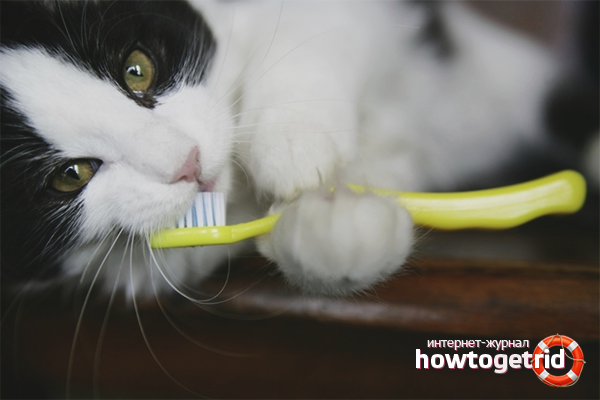




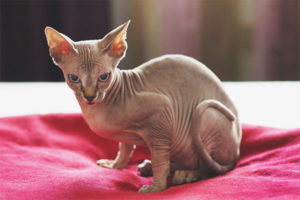
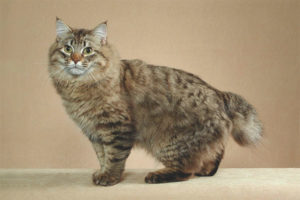
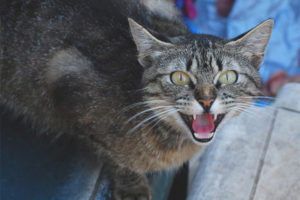
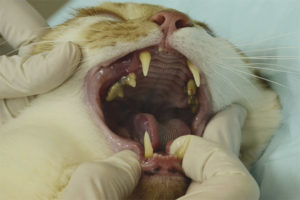
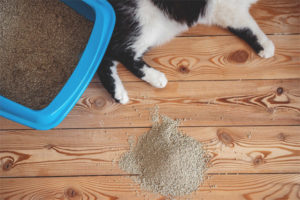
Submit